
views
- Put 3–6 bullet points for each job. Use more bullet points for your most recent positions and fewer for ones that are older.
- Start each bullet point with an engaging action word, such as “accomplished,” “developed,” “established,” or “secured.”
- Highlight achievements relevant to the job, like “Grew sales by 100% by starting new training program” or, “Served 25 customers an hour during peak business.”
- Organize your bullet points from the experience most relevant to the position you’re applying for to the least relevant.
How many bullet points should I list per job?

Aim for 3–6 bullet points for each job on your resume. Include more bullet points for your most recent jobs and put fewer for older positions when you make your resume. Make sure each bullet point highlights a skill you used when you worked that position so employers reading through them get an overview of what you accomplished. For your most recent jobs, include closer to 5–6 bullet points. For older positions that aren’t as relevant, only include 1–2 bullet points instead. Only the last 7–10 years of your work experience is relevant, so any positions older than that can be left off your resume entirely.
Bullet Points vs. Paragraphs
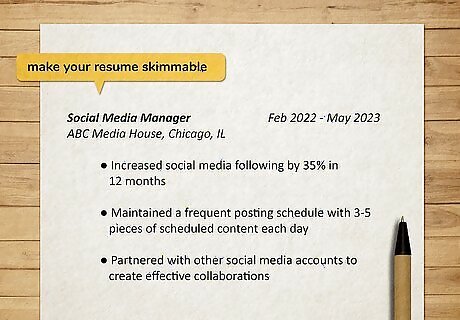
Bullet points offer more skimmability. Bullets make it easy for potential employers to get a quick run-down of your skills, accomplishments, and experiences without having to do a lot of reading. If there's too much densely-packed info in a single section of your resume, the employer might skip over you entirely. Social Media Manager Increased social media following by 35% in 12 months Maintained a frequent posting schedule with 3-5 pieces of scheduled content each day Partnered with other social media accounts to create effective collaborations
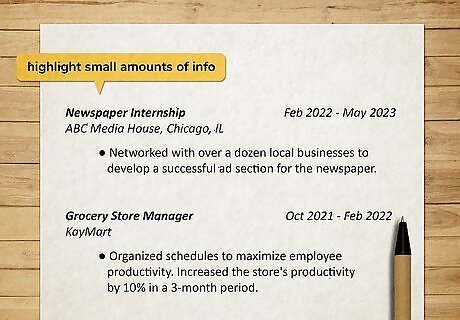
Paragraphs can help highlight small amounts of info. Paragraphs can be an effective way to present information on your resume—assuming that you aren't featuring a large amount of detailed content. Always begin each sentence with an active verb, and use the rest of the paragraph to focus on specific achievements. Newspaper InternshipNetworked with over a dozen local businesses to develop a successful ad section for the newspaper. Grocery Store ManagerOrganized schedules to maximize employee productivity. Increased the store's productivity by 10% in a 3-month period.
Writing Effective Bullet Points
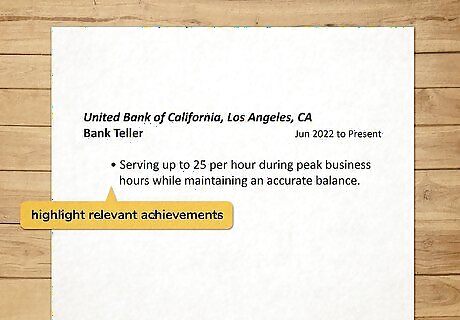
Highlight achievements relevant to the position. Rather than just describing your job duties, try using the STAR method to talk about what you achieved instead. Think of a situation or task that challenged you at the position. Write down the actions that you took to accomplish the job and what the results of your efforts were. Example: If you work as a bank teller at a busy branch, your bullet point could read, “Serving up to 25 per hour during peak business hours while maintaining an accurate balance.” Example: If you implemented a new training program for employees because you noticed the old system was inefficient, you may say something like, “Wrote and implemented new employee training manual, improving work efficiency by 100% over quarterly period.” Example: If you made a website for a student organization, you could say something like, “Managed, updated, and developed website with HTML and CSS to maintain reliable communication between 50+ organization members.”
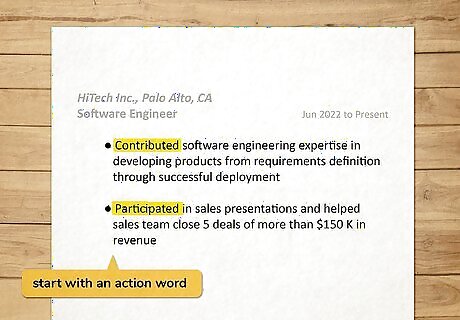
Start each bullet point with an action word. Rather than using “was” or “did” to describe your old position, pick a stronger verb that’s more specific to the skill you’re trying to highlight. Use the present tense if you’re still working the position and the past tense for past jobs. If you’re explaining a leadership skill, use words like: executed, oversaw, planned, produced, & led. To show that you boosted a company’s numbers, try starting bullet points with: achieved, enhanced, generated, maximized, & improved. For a writing or communication skill, use power words like: authored, documented, reviewed, synthesized, & wrote.
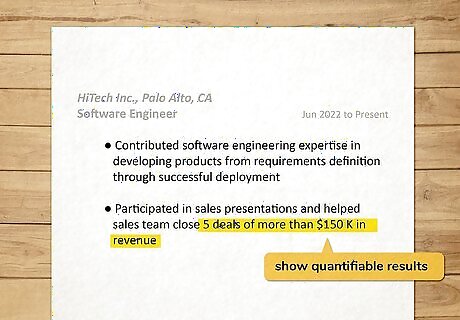
Use numbers to show quantifiable results. Numbers look really good on a resume since they add value to the accomplishments you’re listing under each job. If there’s a specific percentage or number of products you sold, customers you’ve helped, or amounts you’ve generated, be sure to include the number in your bullet point. Example: Managing team of 50+ individuals that has increased department’s quarterly profits by 150% over the past year Example: Preparing food during dinner service for fast-paced restaurant serving 500+ customers a night Example: Wrote and edited 5–10 articles weekly that have generated 10,000+ page views
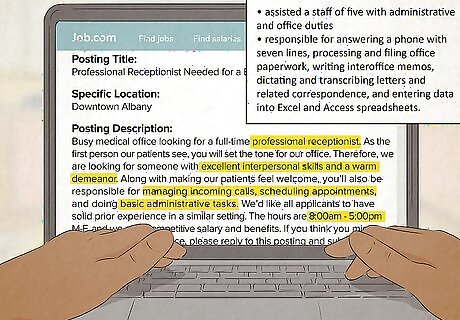
Include keywords from the job listing. Look for the required skills and any unique keywords in the duties written on the job listing. When you’re writing bullet points for your work experience, repeat the word from the listing to make your resume stand out and let employers know you’re qualified for the position. Look in the first paragraph of the job listing for keywords about the skills required for the position.
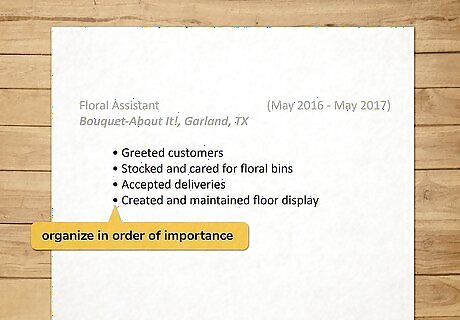
Organize the bullet points in order of importance. Always frontload the bullet points that are most relevant to the position you’re applying for. That way, employers immediately see why you’re the most qualified person for the position.
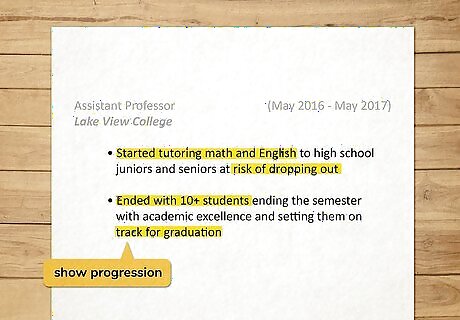
Show progression across multiple bullet points. Tell a before-and-after story to show how the business was when you first start compared to the impact that you made from working there. These bullet points not only highlight your skills, but they also help show how you could potentially improve the employer’s company if you’re hired. Example: If you were a tutor, your bullet points may read: “Started tutoring math and English to high school juniors and seniors at risk of dropping out Ended with 10+ students ending the semester with academic excellence and setting them on track for graduation Example: If you developed a new training method, your bullets could be: Created new training to improve speed for employee onboarding Improved customer satisfaction scores by 100% since last year
Where else on a resume can I use bullet points?
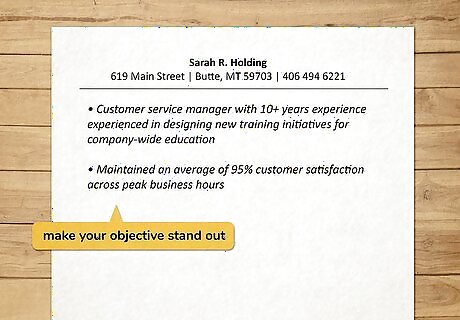
Objective or summary Bullet points are perfect for making your objective or summary short and snappy at the top of your resume. That way, an employer can quickly break down what makes you qualified for the position. Use 1–2 bullet points to write an objective and quickly highlight relevant experience. Example: If you’re a customer service manager, you may lead with a summary like: Customer service manager with 10+ years experience experienced in designing new training initiatives for company-wide education Maintained an average of 95% customer satisfaction across peak business hours
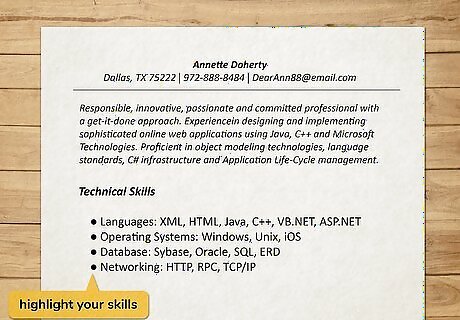
Skills Create a section in your resume to list skills that are related to the technology or industry that you’re applying for. You may list software that you’re proficient in, certifications that you’ve earned, or communication and problem solving skills you’ve developed. Put the skills section near the top of your resume so employers can quickly glance at them.
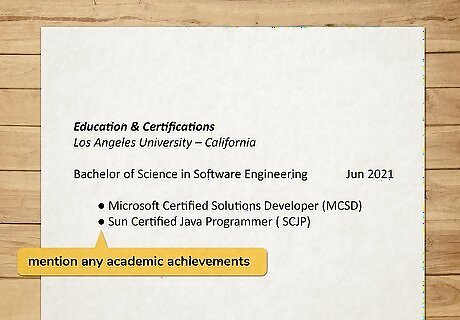
Education When you’re listing your education details, use bullets to mention any academic achievements or awards that you’ve received. You can also use bullet points to mention your GPA, relevant coursework, or student organizations that you were involved in while you were studying. If you’re just out of college, put your education at the top of your resume so employers know you’re just starting your career. As you gain more experience, move your education further down on your resume.
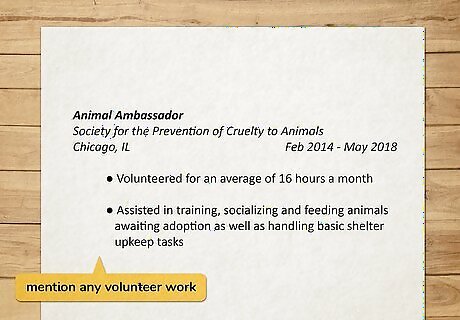
Related projects or volunteer work Employers love seeing that you use some of your time outside of work to get involved. Write down the name of the project or organization as the heading, and then list specific accomplishments that you’ve done with your bullet points. Put your personal projects lower on your resume unless you don’t have a lot of previous work experience.
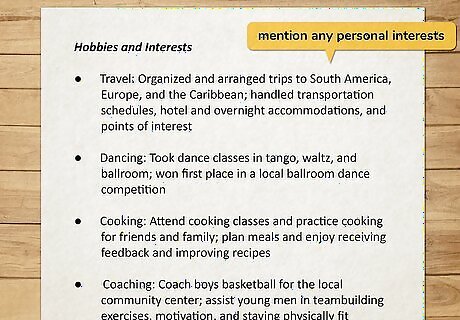
Personal interests While this section isn’t entirely necessary, some employers like seeing a little spark of your personality on your resume. List a few of your favorite hobbies on your resume since they may catch a recruiter’s eye and make you feel like a more personable candidate. Make sure you list hobbies that are work appropriate. Writing something like, “rock climbing” or “board game nights” sounds more professional than “going out with friends.”




















Comments
0 comment